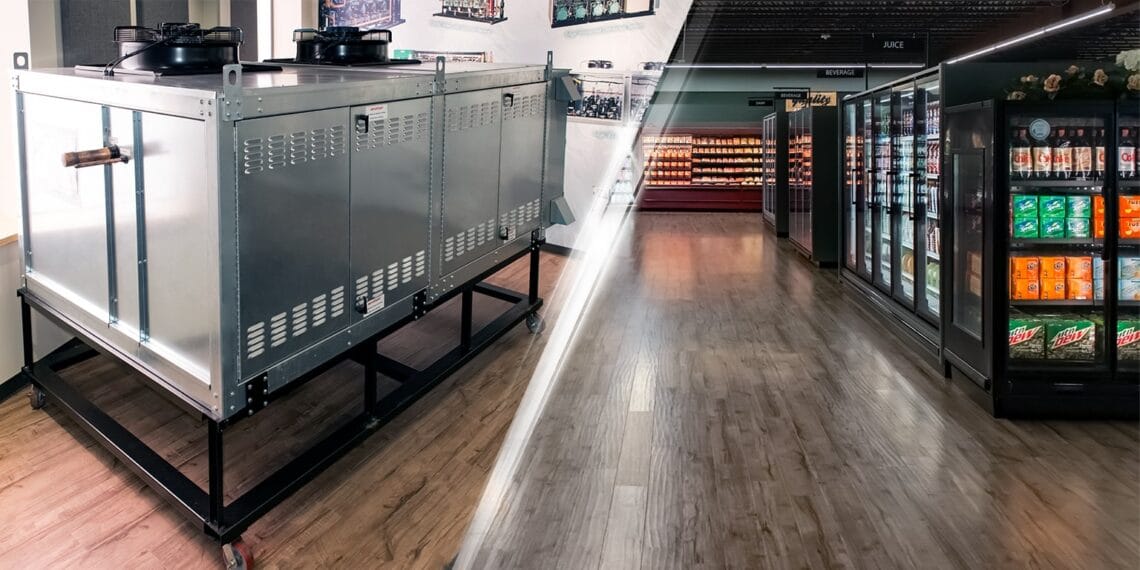EPA Regulations, Retailers, and Their Responsibilities (2018)

The United States Environmental Protection Agency (EPA) regulates which refrigerants may be used and how refrigerants must be handled. It is important to note that individual states may write their own refrigeration regulations above and beyond the EPA regulations.
Since 2015, EPA has proposed several rules, but some of those rules have been vacated in court. We understand that it may be confusing which rules still apply. Please read below to understand which regulations will come into effect in January 2019.
SNAP Program, Prohibited Refrigerants, and California
What is the SNAP Program?
EPA regulates which refrigerants may be used for new or retrofit refrigeration through the Significant New Alternatives Policy (SNAP) program.
Which refrigerants were affected by recent EPA rules?
EPA released Rule 20 and Rule 21 through its SNAP program, which delisted refrigerants with high global warming potential (GWP). This prohibited common refrigerants such as R-134A, R-404A, and R-507A. However, EPA was challenged in court and lost on Rule 20, which means it has been vacated and will not go into effect. It is possible that Rule 21 will also be vacated, but the courts are still evaluating it. Use the links below for more information:
- Zero Zone Guide to 2017 EPA Retail Refrigeration Regulations: Download
- Rule 20 Factsheet: https://www.epa.gov/sites/production/files/2015-08/documents/snap_regulatory_factsheet_july20_2015.pdf
- Rule 20 Vacated: https://www.gpo.gov/fdsys/pkg/FR-2018-04-27/pdf/2018-08310.pdf
- Rule 20 Allows R-404A: https://www.zero-zone.com/refrigerant-regulations-update/
- Rule 21 Factsheet: https://www.epa.gov/sites/production/files/2016-12/documents/snap_action_scr2_factsheet.pdf
Can high GWP refrigerants be used?
Yes, depending on state. Rule 20 was vacated on a national level, but individual states may pass their own refrigeration regulations. In 2018, California passed a regulation that adopts Rule 20 (called Rule 1 in California). This rule prohibits high GWP refrigerants in California after January 1, 2019. More information is available on California legislature’s website: http://leginfo.legislature.ca.gov/faces/billNavClient.xhtml?bill_id=201720180SB1013
High GWP refrigerants can continue to be used in all other states, but that may change too. California is a member of the United States Climate Alliance (USCA), and the other states will likely adopt similar regulations. This includes Colorado, Connecticut, Delaware, Hawaii, Maryland, Massachusetts, Minnesota, New Jersey, North Carolina, Oregon, Rhode Island, Vermont, Virginia, and Washington.
In summary, R-134A, R-404A, and R-507A may be used in all states except California, which prohibits those refrigerants. However, other states in the USCA are likely to prohibit those refrigerants in the coming years.
Section 608, Record Keeping, and Leakage Rates
What is Section 608?
EPA regulates how refrigerants are handled through Section 608 of the Clean Air Act. Section 608 affects many sectors in the refrigeration industry:
- Technician Certification
- Refrigerant Recovery and/or Recycling Equipment
- Refrigerant Leaks
- Refrigerant Sales
- Record Keeping
- Safe Disposal
- Reclamation
- Service Practices
For more detail on how Section 608 applies, visit https://www.epa.gov/sites/production/files/2018-09/documents/section_608_of_the_clean_air_act.pdf
What are the new Section 608 regulations?
EPA issued new regulations that 1) require owner/operators to keep additional records for their refrigeration systems, and 2) change the allowable leakage rates for refrigeration systems. These rules affect ozone depleting refrigerants and will take effect on January 1, 2019.
The new rule included refrigerants with high GWP such as R-134A, R-404A, and R-507A. However, EPA proposed to omit refrigerants with high GWP from the rule. This has not been finalized, so more information will be provided as it becomes available. Use the links below for further reading.
- Summary of the Rule: https://www.epa.gov/sites/production/files/2016-09/documents/608_fact_sheet_supermarkets_property_managers_0.pdf
- Official Revision Announcement: https://www.epa.gov/section608/revised-section-608-refrigerant-management-regulations
What records does an owner/operator need to keep?
- Full System Charge
- Service Work Invoices
- Installation and Calibration of Automated Leak Detection System (if applicable)
- Leak History
- Reports for Leakage Rate Greater than 125% of Full-Charge in a Year
- Retrofit or Retirement Plans
- Requests to the EPA
- System Mothballing Reports
- Seasonal Variance Records
What are the allowable system leakage rates?
EPA reduced the allowable leakage rates. Annual leakage rates are calculated as a percentage of the full system charge. Details for calculating leakage rates can be found at https://www.epa.gov/sites/production/files/2016-09/documents/608_fact_sheet_supermarkets_property_managers_0.pdf.
| Allowable Leakage Rate Before Retiring or Replacing | Old rule | New rule |
|---|---|---|
| Commercial Refrigeration | 35% | 20% |
| Comfort Cooling | 15% | 10% |
| Industrial Process Refrigeration | 35% | 30% |
What must be done when a leak is found?
If leakage rate exceeds allowable rates, the system must be repaired, retired, or replaced.
Repair: If a leak is repaired, the technician must ensure the system is leak-free before adding refrigerant. After refrigerant is added, the technician must check the repair again after the system returns to normal temperatures and pressures. Information for technicians can be found at https://www.epa.gov/sites/production/files/2016-09/documents/608_fact_sheet_technicians_0.pdf.
Retire or Replace: Owner/operators must develop a retrofit or retirement plan within 30 days if the leak cannot be repaired. The plan must be implemented within 1 year. If the leak is repaired within 180 days, the plan can be terminated and the system can be used.
What must be done after a leak?
After a leak, systems must be checked for leaks based on the schedule below. All visible, accessible parts of the systems must be inspected.
- Refrigeration systems with over 500 lb. refrigerant charge must be inspected every 3 months until the leakage rate is below the annual requirement.
- Refrigeration systems with between 50 and 500 lb. refrigerant charge must be inspected every year until the leakage rate is below the annual requirement.
- Refrigeration systems with a leak detection system do not require regular leak inspections. However, the leak detection system must be calibrated annually.
When should a leak be reported to EPA?
If the annual leakage rate of a refrigeration system exceeds 125% of the full charge within a calendar year, owner/operators must notify EPA by March 1 of the subsequent year and describe their efforts to identify and repair leaks.
